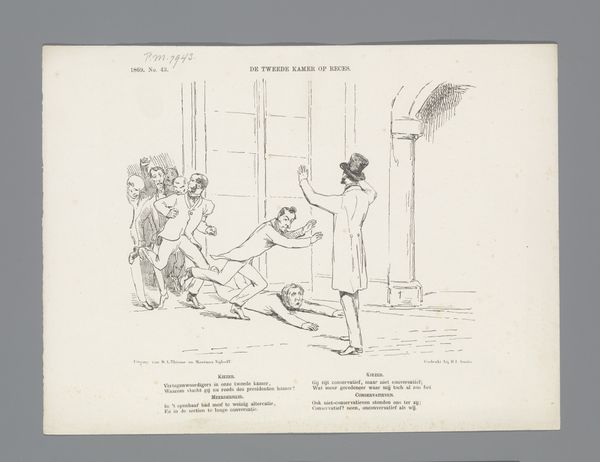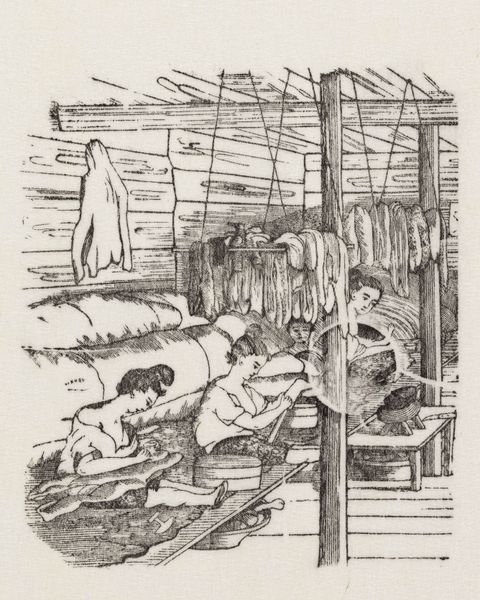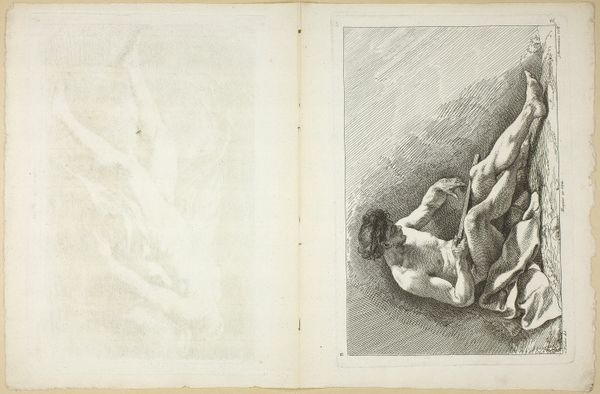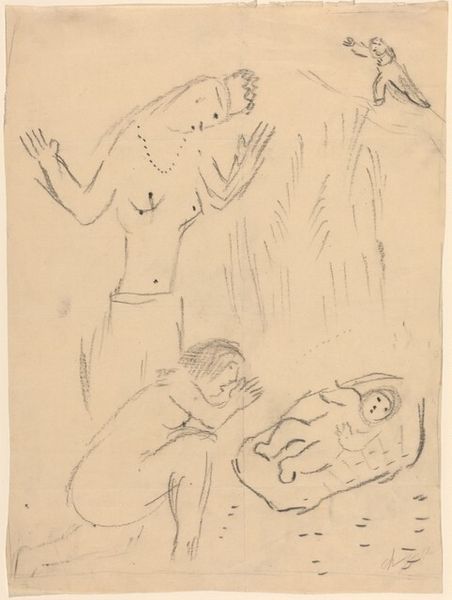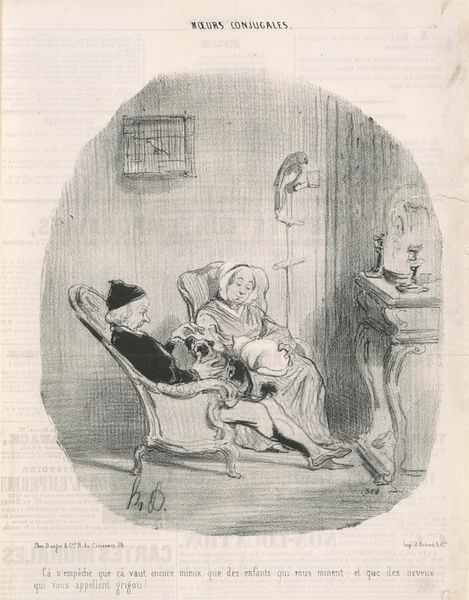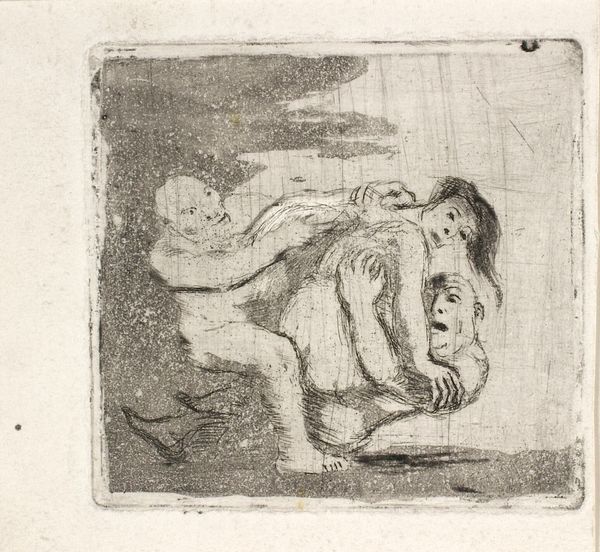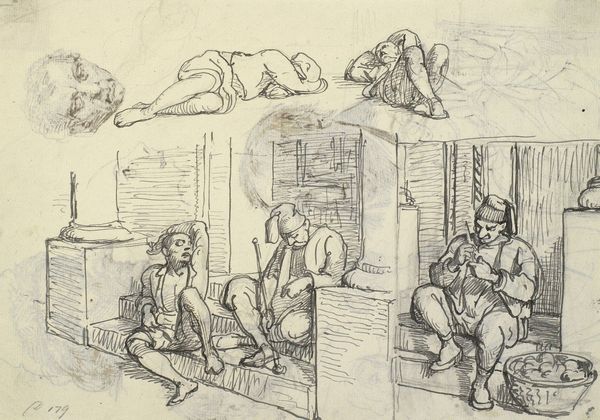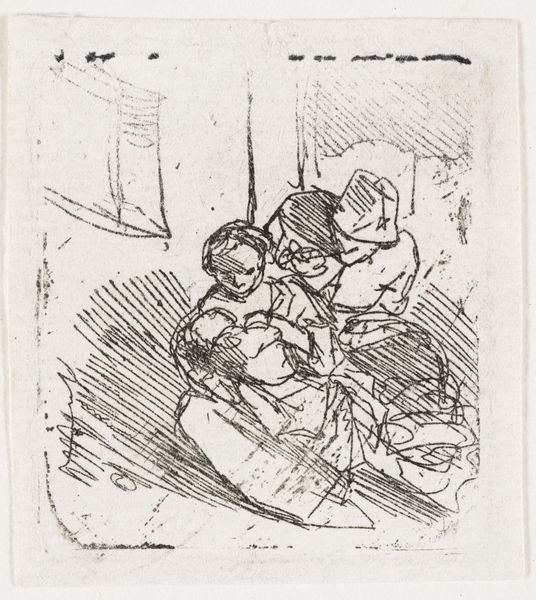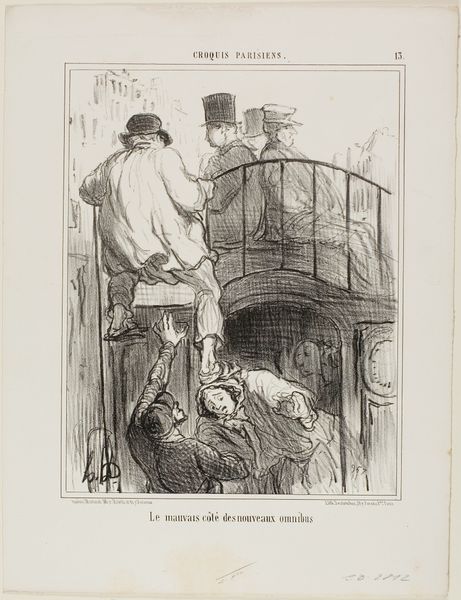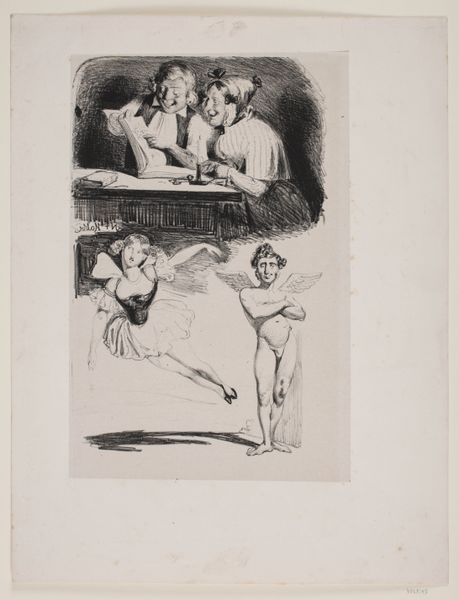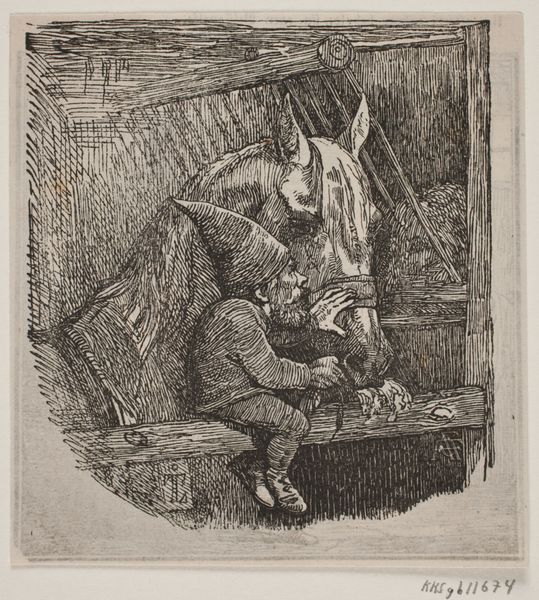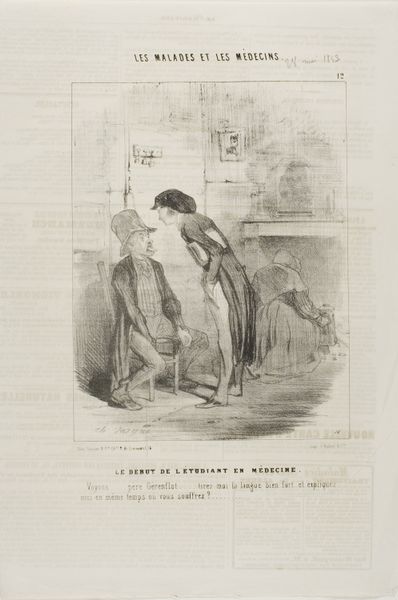
lithograph, print
#
narrative-art
#
lithograph
# print
#
caricature
#
figuration
#
romanticism
#
genre-painting
Dimensions: image: 20.1 x 25.4 cm (7 15/16 x 10 in.) sheet: 24.8 x 31.8 cm (9 3/4 x 12 1/2 in.)
Copyright: National Gallery of Art: CC0 1.0
Curator: Here we have Honoré Daumier's "Fausse position!!!," a lithograph from 1840, part of his series "Les Baigneurs." Editor: My first reaction is, well, this is awkward. The exaggerated expressions and postures! It screams of a staged scene gone wrong. Curator: Absolutely. Daumier used caricature relentlessly as a tool for social critique. This piece speaks volumes about bourgeois discomfort and pretension, particularly within the constructed space of leisure. The exaggerated anatomy and absurd situation reveal a certain vulnerability, almost a mockery, of the bathing experience as a public display. Editor: Focusing on the material production, you have the lithographic stone. It allows for multiple prints, distributing the commentary far and wide. Look at the clear delineation and those stark contrasts; it’s mass production, art commenting on the mass behaviors of the aspiring classes. Curator: Precisely! The proliferation of these images served to both reflect and shape the emergent, complex identities of the time. The performative nature of gender is also visible here, within the anxieties of bourgeois masculinity. These bodies seem at odds with any notion of confident or even healthy masculine form. Editor: And the contrast in Daumier's labor - physically creating the image versus the leisured depicted. The man above, precariously perched. The face just afloat in the water. All feel incredibly tense. It’s more staged anxiety than relaxation or candidness. I mean, the lithographic stone itself demanded careful craftsmanship to create the sense of immediacy. Curator: Agreed. I think reading the work today it pushes for an intersectional analysis, highlighting the artist’s complex awareness of class and gender norms, not to mention the politics embedded in leisure activities during this period. The choice of print means these scenes weren't just passively consumed. They become conversational tools, fueling debate about societal hierarchies and constructed norms. Editor: It's intriguing to think about the dialogue created by the image’s method of production: mass distributed to question the excesses of the period, really asking who gets to have these moments of repose and, crucially, what does it cost? Curator: Seeing it through this lens gives it such resonance still. Editor: Indeed. The relationship between the art’s fabrication, context and subject becomes really apparent.
Comments
No comments
Be the first to comment and join the conversation on the ultimate creative platform.
